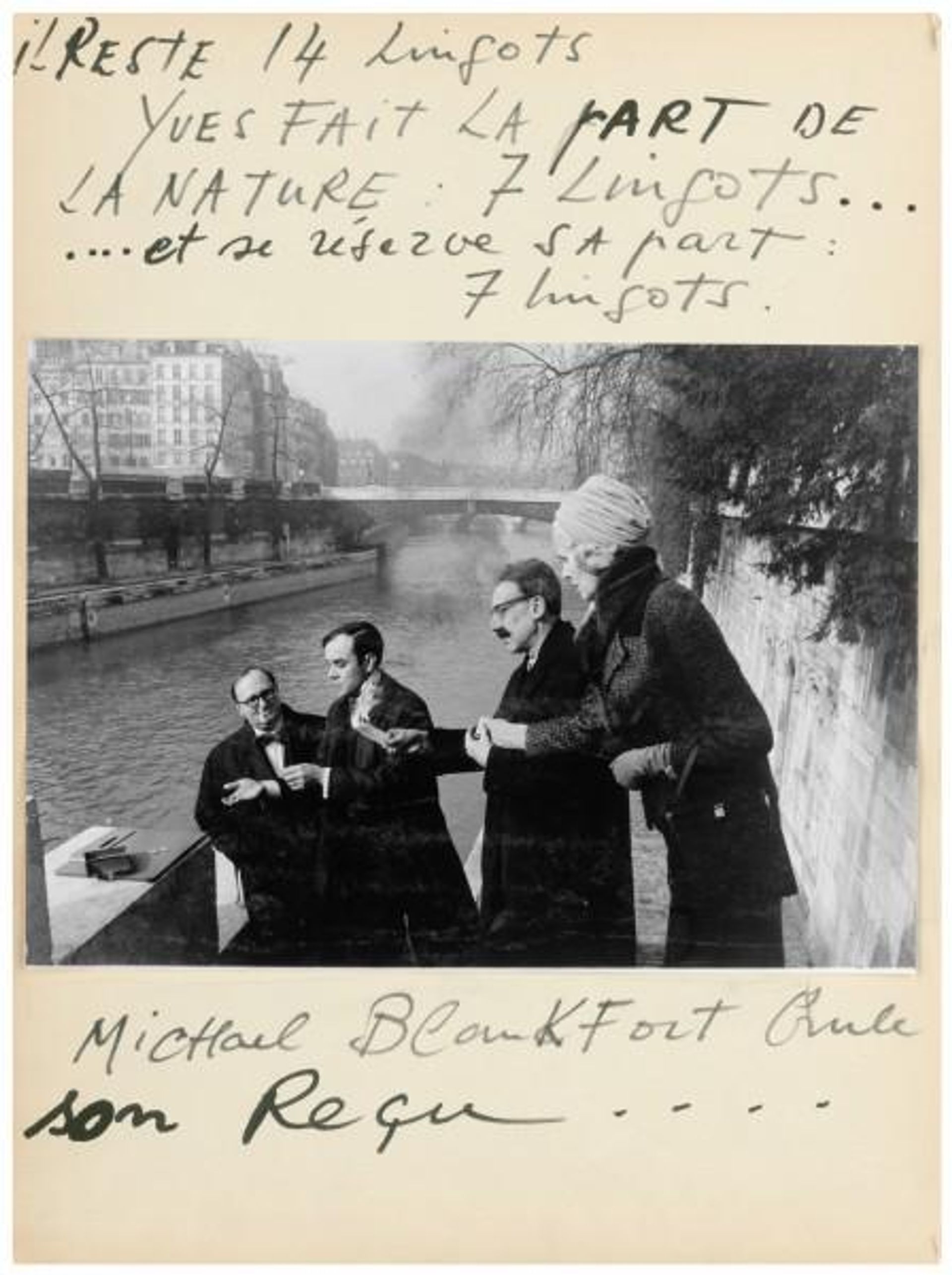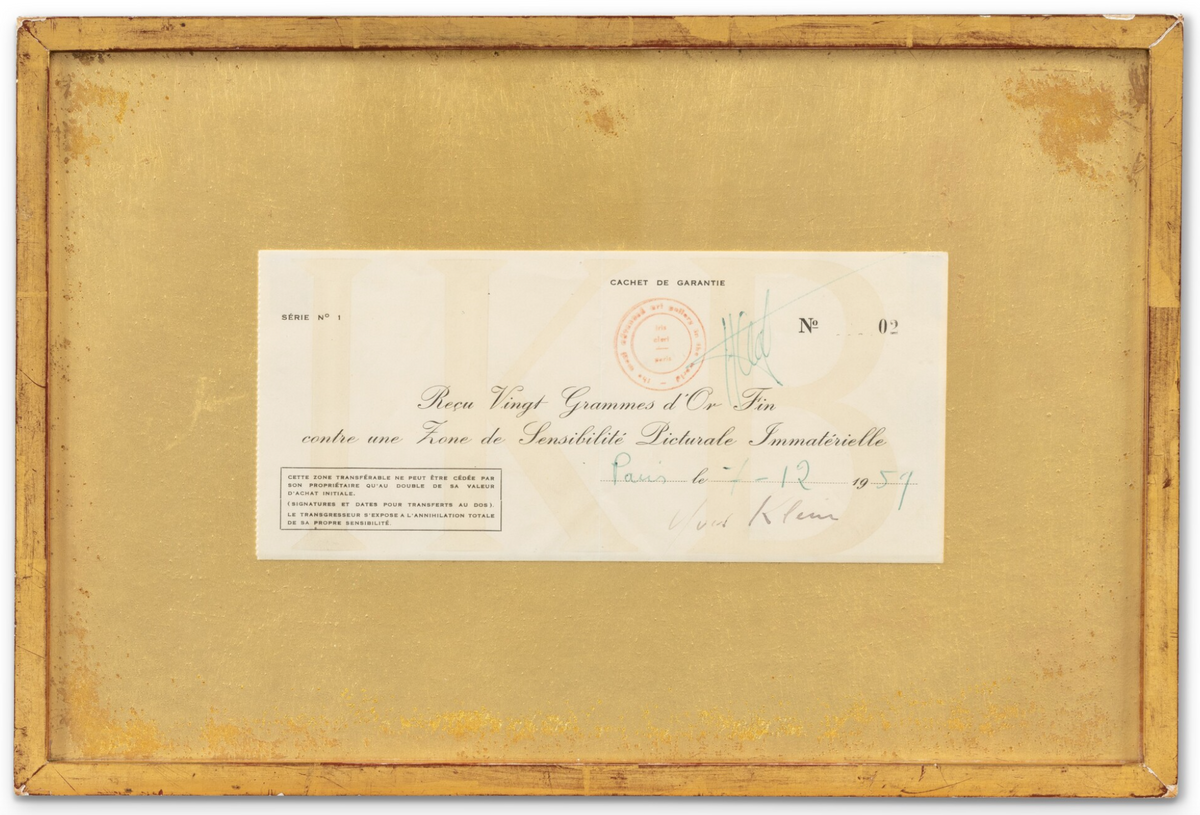Long before Beeple and Pak there was Yves Klein, who mastered the art of convincing people to pay money for not really anything at all.
In the last three years of his life (1959-62), the French conceptual artist sold nine versions of an immaterial zone (zone de sensibilité picturale immatérielle)—an invisible and intangible area of empty space that exists only in conceptual terms—in exchange for a weight of pure gold. A receipt, designed to look like a banker's cheque, was drawn up and the buyer was given two options: either retain the receipt and have the corresponding immaterial zone become transferrable through resale, or burn the receipt in a ritual between collector and artist, which would make the zone become intrinsically part of them and cease to exist upon their death.

A transfer ritual of a Zone of Immaterial Pictorial Sensibility to Michael Blankfort at Pont au Double, Paris, February 10th 1962. Photo: © Giancarlo Botti ©The Estate of Yves Klein c/o ADAGP, Paris
While three buyers chose to undergo the ritual, which saw Klein throw half the gold into the River Seine in Paris, several others chose to keep the receipts, including the Parisian dealer Jacques Kugel, who purchased the second-ever immaterial zone in 1959 for 20 grams of gold.
Kugel's receipt will now be offered at Sotheby's Paris on 5 April with an estimate of €300,000 to €500,000. It is being sold from the collection of the curator and advisor Loïc Malle, who bought the receipt from Galerie 1900-2000 in Paris in 1986. It has been displayed at London’s Hayward Gallery, Madrid’s Museo Nacional Centro de Arte Reina Sofía, Stockholm’s Moderna Museet and Paris’s Centre Pompidou. Of the existing receipts that were not burned, this one is the most widely exhibited and well-documented.
As the receipt was not burned, its terms of ownership are such that it transfers Klein's immaterial zone to the successful bidder. According to Sotheby's catalogue notes, Klein kept a ledger recording all sales and resales of these empty zones, an analogue precursor to today's modern blockchain technology. To solidify the link to NFTs (non-fungible tokens), Sotheby's will accept cryptocurrency for this lot—all others from the sale must be paid in fiat currency.
Many of the philosophical and metaphysical questions that have been provoked by the recent rise of NFTs were also posed by Klein within the notes he took on these rituals. While it would seem that the original buyers of the immaterial zones who kept their receipts did a better job of owning a work of art than those who burned them—at least in terms of conservation and profit-making—Klein draws our attention to the fact that our assets, in comparison to experiences, will continue to be traded long after we die, and asks what can we really ever claim to possess?
"Every possible buyer of an immaterial pictorial sensibility zone must realise that the fact that he accepts a receipt for the price which he has paid takes away all his possessions," Klein wrote in 1959. "In order that the fundamental immaterial value of the zone belongs to him and becomes a part of him, he must solemnly burn his receipt, after his first and last name, his address and the date of the purchase have been written on the stub of the receipt book."


